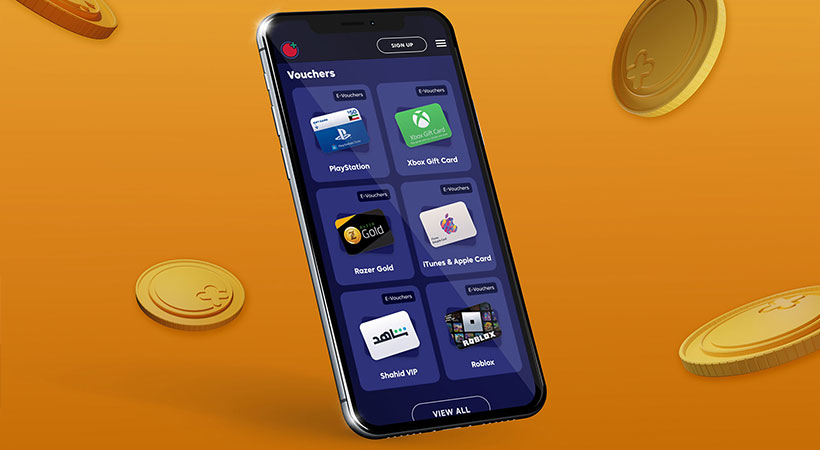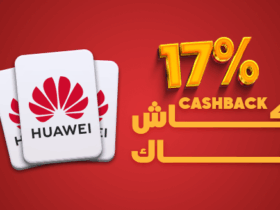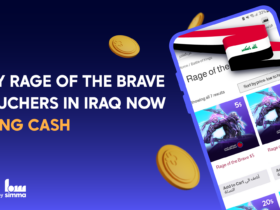Have you ever topped up your e-wallet or shopped on your phone and found yourself wondering when the very first mobile payment was made? Chances are, you haven’t. We’ve grown so accustomed to the devices in our pockets being our most vital financial tool that it’s hard to remember a time when they were merely cumbersome portable telephones. Can you guess who pioneered mobile payments? Who were the brilliant minds behind this revolutionary financial technology that fundamentally changed how humans interact with money? You guessed it. It was none other than the Coca-Cola marketing team.
The World’s First Mobile Payment Was… Refreshing
In 1997, Coca-Cola installed a couple of their iconic vending machines around Helsinki, Finland, with a first-of-its-kind feature: you had to pay for your drink using your phone. After choosing a beverage, the user sent an SMS to pay the machine through an account that was linked to it, and voila—the machine dispensed the drink. The slogan for the campaign was “Dial a Coke.”
Merita Bank, a prominent financial institution also in Finland, was paying close attention to what was going on with Coca-Cola’s vending machines and saw the potential mobile phones could have in the finance arena. A few short months later, they launched the world’s first SMS-based mobile banking service to their clients locally. Merita Bank account holders could carry out basic banking operations, such as bill payments and balance inquiries, by simply sending and receiving SMSs.
Mobile payments skyrocketed. The possibilities of what could be done through a mobile phone were endless for companies, brands, and banks looking to increase accessibility to their products and services. The introduction of WAP in 1999 allowed mobile phones to access the internet for the first time and took mobile commerce to the next level.
But Coke Is Best After a Pizza
E-commerce had already been around for a few years before Coca-Cola and Merita started experimenting with mobile commerce. Amazon first launched its online bookstore back in 1994, and an ambitious Pizza Hut owner in Sacramento, USA, came up with PizzaNet a few months earlier. This new cutting-edge tech allowed anyone with a PC and dial-up internet to order books or pizza online, and so a pizza from the hut became the first thing ever sold over the internet.
E-commerce might’ve started with pizza 29 years ago, but it’s grown into a $4 trillion (yes, that’s a T) market this year according to Satista. Mobile payments account for almost half of that pie and are forecasted to have a compound annual growth rate of 29% by 2028. With the introduction of innovative mobile payment solutions such as Apple Pay, Google Pay, and Amazon Pay, payments in the real world and online have become as easy as clicking a button or holding your NFC-enabled (near field communication) device to a payment portal.
COVID-19 really pushed mobile payments and m-commerce further into the limelight, particularly in developing economies. This can be attributed to the widespread adoption of cost-effective Android phones. Among the regions that witnessed such a proliferation was MENA. Its SIM card penetration rate is expected to reach 107% in 2025 according to GSMA, and its smartphone adoption rate is estimated to climb to over 80% by then. Out of the current smartphone users, 85% of them have tried at least one alternative payment solution on mobile in 2022, such as carrier e-wallets, mobile BNPL products, biometric payments, etc.
Meticulously Mapping The Milestones of MENA’s Mobile Money
It’s hard to pinpoint exactly when the first mobile payments solution in MENA was introduced. In the late 2000s and early 2010s, a number of public sector initiatives aimed at introducing mobile payments in local markets started popping up across the region. Digitalization was all the rage, and while the rest of the world swapped their bills for digital monies, the Arab obsession with cold hard cash was quickly becoming a nuisance. Financial regulators, ministries, and central banks all over MENA were racing to bring forward a solution to integrate the unbanked and underserved masses, and mobile was the winning ticket.
A strong contender for MENA’s first mobile payment solution is the Dubai government’s mPay service. In 2008, The Dubai eGovernment launched mPay, a mobile-based payments solution that allowed its citizens to pay for governmental services through their phones. Its first feature? Topping up your Salik account to pay for toll roads.
A Smooth Salik Road To Mobile Payments
Salik, the UAE’s electronic toll road system, allows drivers to avoid congested toll booths by attaching an RFID sticker to their windscreen which automatically charges their accounts when they’re on a toll road. Even though it had only been launched a year before, it was already clearing up Dubai’s main arteries. But the service wasn’t flawless. At launch, you could only top up your Salik account through prepaid cards that drivers had to physically purchase in Dubai. While toll roads were clearing up, alternative toll-free roads were jammed with drivers who either didn’t want to pay for Salik or were driving into the city from other emirates and didn’t have access to the service.
Enter: mPay. The Dubai eGovernment launched the service for free, only requiring an email address, a mobile number, and bank account information to register online. Then, topping up was as simple as sending an SMS with a dedicated PIN and the amount the driver wished to recharge. It quickly caught on in Dubai and the rest of the UAE. Soon, you could pay for your taxes, traffic fines, utility bills, Etisalat phone bills, customs duties, and much more through the service. With the growing use of smartphones, mPay evolved from its SMS-based service into an iOS and Android application in 2012 and offered a plethora of new features, all supporting easy mobile internet payments.
While government-backed initiatives opened the door for mobile payments in MENA, it was the mobile carriers that really made it happen. In 2011, Etisalat announced it was working with Mastercard to bring the next generation of mobile payment technology to the UAE. They launched smartphone NFC payments powered by Mastercard’s PayPass network, effectively becoming the first in the region to introduce tap-to-pay tech. They teamed up again two years later to bring mobile payments to MENA’s most populous nation, Egypt.
One Small Step For Etisalat, One Giant Leap For Egypt
The regional telecom giant and global payments facilitator partnered with the National Bank of Egypt in 2013 to offer Etisalat Egypt subscribers the country’s first mobile wallet, Flous. Flous was available on both feature phones and smartphones, and aimed to offer users safe and convenient mobile payment services. In its first version, users could load cash to their mobile wallets at any physical Etisalat branch and transfer funds to other user accounts through an SMS or an application. The funds could then be withdrawn from any Etisalat Egypt branch. Down the line, more features were added including phone bill payments and e-commerce services for global retailers.
The National Bank of Egypt and Mastercard launched another similar service later that year to increase accessibility to mobile payments in the largely unbanked population, only this time through the Egyptian payment platform Fawry. Fawry, launched in 2008, allows citizens to pay anything from their bills and taxes to their installments through their designated POS systems. The new service, practically named Phone Cash, provided the same services that Flous did but wasn’t restricted to subscribers of a specific carrier. Users could top up and withdraw funds from their e-wallets at any Fawry POS merchant across Egypt, and take advantage of Fawry’s payment and money transfer services through the application or SMS. Today, with a network of over 166,000 merchants, it’s become indispensable in the daily lives of Egyptians. It boasts over 35 million users and an array of payment products tailored to the population’s needs, actively bridging the gap between cash and electronic payments nationwide.
Jordan Enters The Big Leagues
Another successful example of public sector finesse in implementing mobile payments comes from Jordan, whose central bank played a key role in introducing the tech nationally. It also ensured it made sense for stakeholders—banks and non-banks alike—to encourage its adoption. As early as 2010, the Central Bank of Jordan published a circular on mobile payments, officially launching mobile money in the country. In 2013, they came out with a new set of regulations—the Mobile Payments Services Instructions—relaunching mobile money in Jordan after the first attempt didn’t garner much interest from users or private sector players. This time, they were armed with JoMoPay (Jordan Mobile Payments).
JoMoPay was an effective model for interoperability between mobile payment service providers. It allowed users to perform transactions between wallets and across platforms offered by different mobile payment service providers. Users with an account on one provider’s wallet could easily transfer funds, buy tickets, or pay bills to an account on another provider’s platform. JoMoPay was a real gamechanger. It was among the pioneers of interoperability for mobile payment providers worldwide, and remained the first of its kind in MENA for a long time. Not only did it make it reasonable for users to sign up for mobile wallets, it was also critical in increasing accessibility to Jordan’s largely unbanked population. Only a year after its introduction, there were already eight mobile wallets and payment services on the network offered by both public and private telecom carriers and banks.
The Rest of MENA Plugs In
In Morocco, it was the carriers that introduced mobile payments to their subscribers when MarocTelecom and Mediatel launched MobiCash and Cash respectively in the early 2010s. Neither initiative garnered much traction, and adoption levels for mobile payments remained relatively low. Even though mobile NFC payments were launched in Morocco in 2016, it wasn’t until 2018 that mobile payments were rapidly adopted when Bank Al Maghrib and the main telecommunications regulator jointly developed the first popular mobile wallet, M-Wallet. M-Wallet is an interoperable mobile payments service that offers Moroccans peer-to-peer transfers and mobile merchant payments, among other services.
Meanwhile, the Kingdom of Saudi Arabia saw two major consecutive launches of mobile payments in 2018. The first was Mada Pay, a collaboration between Visa and Mada, the Saudi national payment scheme that has managed the Kingdom’s payments since 1990. The service came in the form of an Android-based application powered by the Visa Token Service, and allowed users to make contactless NFC payments to registered merchants in and out of the country. A few months later, telecom giant STC launched STC Pay which allowed subscribers to transfer funds and make bill payments through their phones. It quickly grew to become the top adopted mobile payments solution in the Kingdom with over 8 million users today, as well as MENA’s first fintech unicorn when its value reached $1.3 billion in 2020.
Palestine also joined the MENA mobile payments mania in 2020 when a group of resilient Palestinian entrepreneurs partnered with telecom carrier Jawwal (previously Paltel) to launch Jawwal Pay. The application allows Palestinians to transfer funds, complete online purchases, and pay phone bills through their smartphones. Since then, the steadfast Jawwal Pay team has tirelessly worked on integrating more merchants and services onto their platform.
Money, Money, Money… Mobile Money… In The Arab World
Tired of the history lesson? Take a breather and play a round of VIP Baloot. You’re going to need it because the numbers get pretty crazy with mobile payments in the region next.
The rapid growth of mobile payments in MENA is unparalleled across the globe. No region is adopting mobile commerce quite as quickly, and the graph continues to climb upwards. According to Mckinsey, 60% of experts believe that mobile wallets will be the preferred payment method in MENA by 2025, beating Asia-Pacific by a strong 22 percentage point lead. The research also highlights that since COVID-19, mobile wallet transactions in Saudi Arabia have grown by an astounding 18% per month.
Mobile payments received a strong boost in Jordan as well, registering a 20% growth in the number of mobile wallets during the first few months of lockdown. New measures were set in place by JoPACC, the domestic payments system operator behind JoMoPay, to make it easier for Jordanians to access and benefit from m-commerce. They worked closely with authorities and banks to unlock more capacity for mobile wallet users, decrease their user to agent/merchant ratio, and offer a more seamless and accessible payment and collection experience. Support for vulnerable Jordanians and refugees offered by the National Aid Fund during the pandemic was further secured through a partnership with JoPACC to facilitate aid distribution through mobile wallets.
The Egyptian mobile payments market prospered during COVID-19 too. Egyptians jumped onto the m-wallet bandwagon by the millions in the months of lockdown to quickly find a way to purchase goods and transfer money without having to leave their comfy couches. Between March and October of 2020, two million Egyptians subscribed to mobile wallets. In those same seven months, mobile peer-to-peer transfers more than tripled in Egypt to reach a relatively colossal 3.8 million transactions per month according to the national telecom regulator NTRA. The Central Bank of Egypt further reported that mobile wallet transactions worth a whopping LE 233 billion were made by Egyptians in 2021.
By 2022, the rate of mobile wallets in Egypt had soared to more than 38,000 wallets per 100,000 adults, and It is forecasted that 50% of the population will use mobile wallets by 2025. Virtually every bank, financial services provider, telecom carrier, ride-hailing service, e-commerce platform, and fruit juice kiosk in Egypt has launched a mobile wallet. Today, Fawry’s myFawry mobile wallet dominates with a 60.3% market share, followed by Vodafone Cash with 19.6%. Orange Cash, Etisalat Cash, and CareemPay round up the top five in that order.
The Gulf Goes Cashless
Digital payments have overtaken cash in Saudi Arabia last year, with electronic transactions registering 57% of the total payments made in the Kingdom. Mobile banking was favored among 60% of Saudi banking customers, which aligns with rates in highly developed markets. In 2021, Saudis made 1.8 billion (yes, that’s a B) payment transactions through their mobiles, amounting to over SR 128 billion (yes, that’s another B) jumping to and from mobile phones.
Despite this, the UAE continues to lead the pack in the MENA mobile payments race at a market value of $3.64 billion and an annual growth rate of 12%. The number of mobile payment transactions were picking up in the UAE prior to the pandemic, registering a high 9% year over year growth, in comparison to Europe which only managed half of that growth rate from 2014 to 2019.
Then in 2021, the world came to the Expo 2020 Dubai in the first breath of fresh air since the pandemic. In a global first, Click to Pay technology was the default payment solution during the Expo. Millions of visitors were paying for services, attractions, food, souvenirs, and more using their mobile phones.
Last year, 88% of UAE residents used at least one alternative digital payment method, and 39% utilized contactless mobile payments. Astonishingly, 20% of consumers in the UAE report having used crypto as payment this past year, and 18% used wearable tech.
But nowhere does it get crazier than Qatar. The Fifa World Cup hosts, determined to throw a competition for the books on and off the field, deployed some of the most exciting mobile payments solutions in the region yet. In partnership with Visa, the organizers installed more than 5,000 contactless POS systems across venues, fan zones, and even taxis to cut down on cues and increase efficiency. Taking it a step further, facial recognition payments powered by mobile wallets were accepted at a chain of popular coffee shops across Doha thanks to a partnership between QNB and PopID.
Small and medium-sized businesses were not left behind: Visa announced it was partnering with Qatari banks to allow SMEs to accept contactless mobile payments on their own NFC-enabled Android device. Not only did these solutions provide a seamless user experience for over a million visitors, they also allowed Visa to test its new technologies on a massive scale. Additionally, they provided a glimpse into a cashless future, hopefully accelerating its adoption across MENA.
The Unstoppable Rise of Mobile Payments in MENA
Efficiency and convenience were always a strong instigator in the evolution of mobile technology. There was no turning back once we figured out how to save a trip to the bank or the grocery store with just one click. A simple and accessible solution seamlessly integrated the unbanked millions into the age of digital commerce through the mobile phone already in their pockets. What started with humble experimental beginnings to help implement mobile payments in the region has flourished into an indispensable multimillion dollar market in MENA that’s now leading the way in payments technology.





